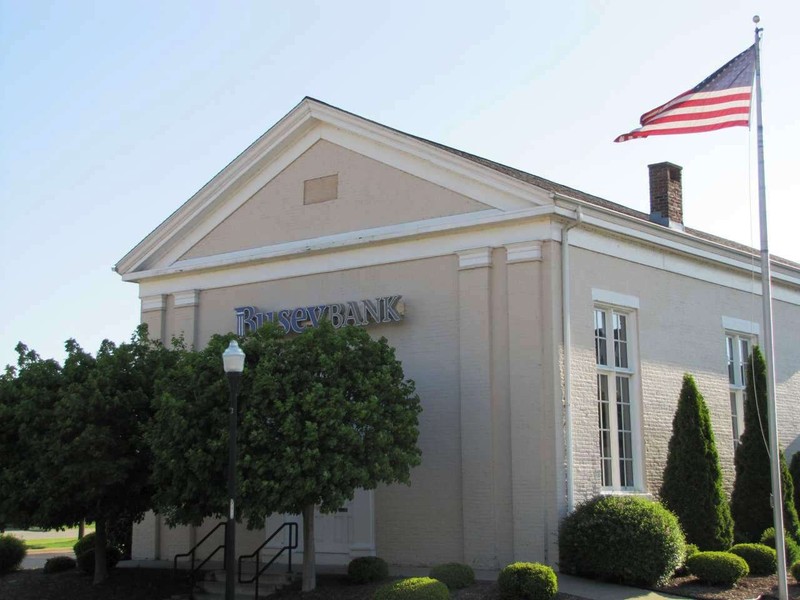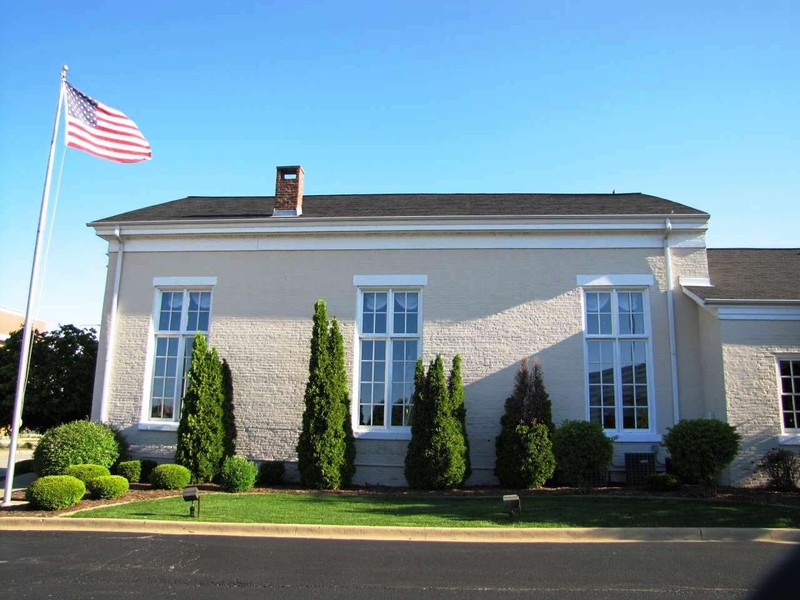Cumberland Presbyterian Church (A.K.A. Peoria Musicians Club)
Introduction
Text-to-speech Audio
The Cumberland Presbyterian Church (1856), also known as the Peoria Musicians Club, is Peoria's oldest standing church building. The Cumberland Presbyterian Church, a splinter Presbyterian congregation, remained there only a few years before it changed hands among various faiths. In 1913, it was bought by the American Federation of Musicians Local 26. Most recently, it was the home to a bank.
Images
Historic Cumberland Presbyterian Church in Peoria, IL, pictured here as a its most recent status as a local bank.

Historic Cumberland Presbyterian Church in Peoria, IL, pictured here as a its most recent status as a local bank.

Backstory and Context
Text-to-speech Audio
The Cumberland Presbyterian Church (1856), also known as the Peoria Musicians Club, stands as the city's oldest standing church building and serves as a monument to when Peoria slowly transitioned from a trading port to one of an urban community (the non-native population grew from 1,500 in 1840 to a little more than 14,000 in 1860). The structure also points to a time in American religious history tied to the Great Awakening; the Cumberland Presbyterian Congregation broke off from Presbyterian Church in the United States of America (PCUSA) becuase the Cumberland group (mainly located in Kentucky and Tennessee) ordained clergy without a formal, doctrinal education.
The First Great Awakening led to a division among North American Presbyterians, with a new faction forming that believed strongly in revivalistic approaches instead of the more traditional, doctrinal-based methods. Though the two sides managed to co-exist after a brief, formal split (1741 - 1758), the Second Great Awakening and the reality of frontier life led to the creation of the Cumberland Presbyterians. In short, formally educated (or highly trained) clergy were far an few between in places such as Kentucky and Tennessee. Thus, Presbyterians near the Cumberland Gap region drew on the revival-style principals and ordained clergy without formal training. Consequently, the church's governing body, the Kentucky Synod, dissolved the Cumberland Presbyterian chapter and expelled many of its members. Hence, the Cumberland Presbyterian operated as its own congregation rather than as a chapter of the Kentucky Synod (and PCUSA).
An understanding of the Cumberland Presbyterian philosophy can be noted in the book, History of the Cumberland Presbyterian Church by B.W. McDonald:
It should not go unnoticed that there's a Danial Boone reference in that paragraph.
The Cumberland Presbyterian Congregation arrived in Peoria during the 1850s, but they did not make much of a local impression, disbanding in 1863. The St. John's Episcopal Church then took ownership of the building followed by several church denominations such as the First German Baptist Church, North Sheridan Baptist Church of Peoria and the In Agudas Achim Congregation. Finally, in 1913, the Peoria Musicians Union Local 26 moved in and remained in the building for several decades.
The structure enjoys a Greek Revival architecture; a popular design found throughout the U.S. from the 1830s through the time of the Civil War in the early 1860s. As well, the church proved to be one of Peoria's first buildings to include masonry construction.
Sources
Kenyon, Leslie H. "Nomination Form: Cumberland Presbyterian Church." National Register of Historic Places. nps.gov. March 18, 1980. Digital copy located at http://gis.hpa.state.il.us/PDFs/200347.pdf.
Longfield, Bradley J. The Presbyterian Controversy: Fundamentalists, Modernists, and Moderates. New York: Oxford University Press, 1991.
McDonnold, B.W. History of the Cumberland Presbyterian Church. Nashville: Board of Publication of Cumberland Presbyterian Church, 1888. https://ia802906.us.archive.org/22/items/historyofcumberl00mcdo/historyofcumberl00mcdo_bw.pdf
Photo Sources
Both photos of the church, pictured in recent years as a local bank, are located at http://www.waymarking.com/waymarks/WMBPX3_Former_Cumberland_Presbyterian_Church_Peoria_Illinois. Waymark Code: WMBPX3, Published By: "silverquill"
Longfield, Bradley J. The Presbyterian Controversy: Fundamentalists, Modernists, and Moderates. New York: Oxford University Press, 1991.
McDonnold, B.W. History of the Cumberland Presbyterian Church. Nashville: Board of Publication of Cumberland Presbyterian Church, 1888. https://ia802906.us.archive.org/22/items/historyofcumberl00mcdo/historyofcumberl00mcdo_bw.pdf
Photo Sources
Both photos of the church, pictured in recent years as a local bank, are located at http://www.waymarking.com/waymarks/WMBPX3_Former_Cumberland_Presbyterian_Church_Peoria_Illinois. Waymark Code: WMBPX3, Published By: "silverquill"
